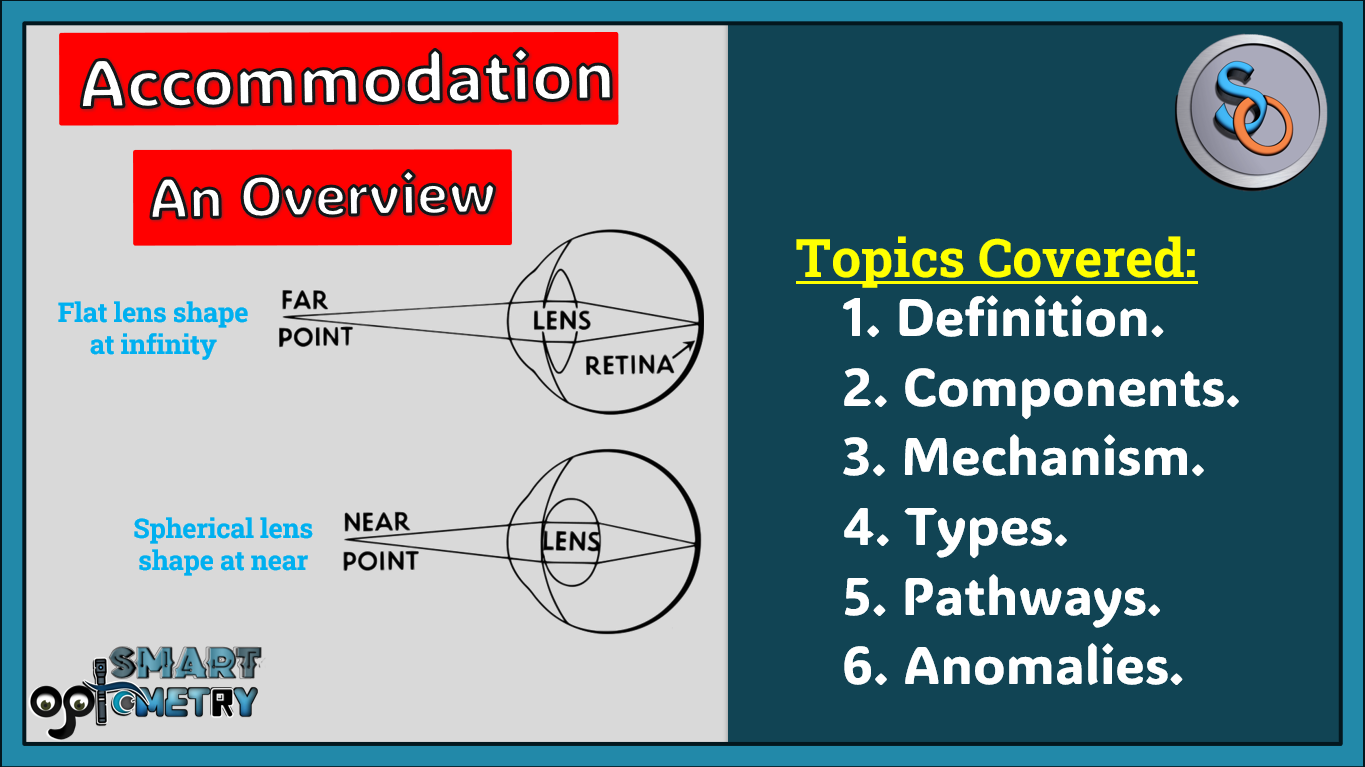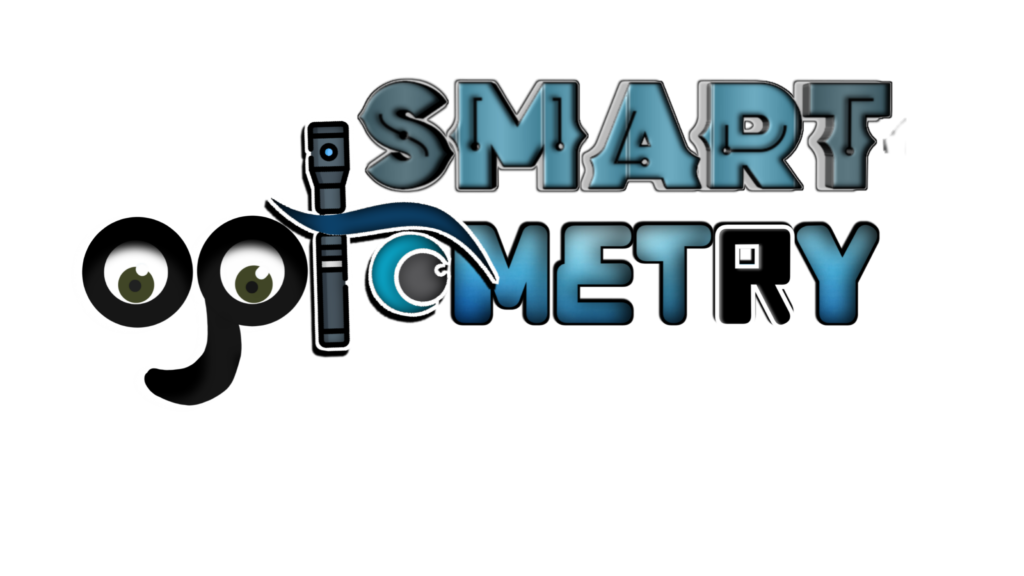Table of Contents
Introduction of Accommodation of Eye:
- In emmetropic eye, if object is at 6m or infinity then light rays coming from that object focus on the retina.
- But if the objects are brought closer than 6m our eyes need more converging power to focus on the retina.
- Accommodation is the mechanism through which our eyes increase the converging power to focus on the retina when object is closer than 6 meters.
- Accommodation is the mechanism by which the eye changes refractive power by altering the shape of lens in order to focus objects at variable distances.
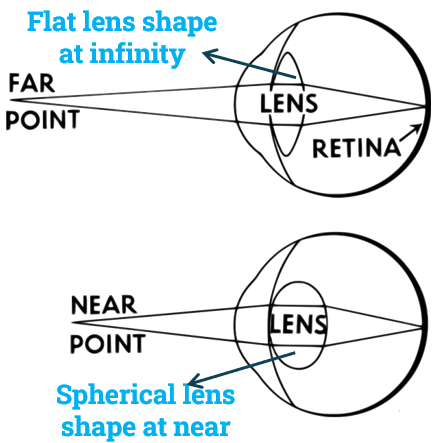
- At rest the radius of curvature of the anterior surface of the lens is 10 mm and that of posterior surface is 6 mm.
- During accommodation, the curvature of the posterior surface remains almost the same, but radius of the anterior surface changes to 6 mm.
Component of Accommodation of Eye:
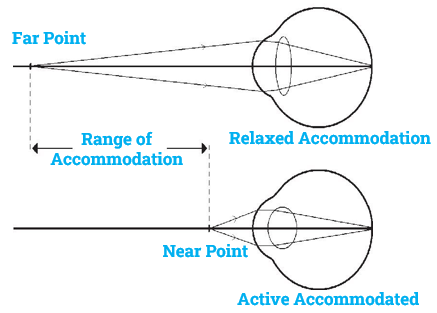
Far point:
- Position of an object when its image clearly falls on retina with no accommodation.
Near point:
- Nearest point clearly seen with maximum accommodation.
Range of accommodation:
- Distance between far point and near point.
Amplitude of accommodation:
- The difference between the dioptric power needed to focus at near point (P) and far point (R) is called amplitude of accommodation (A = P – R).
- In a specific distance amplitude of accommodation can be identify by using the formula:
100/D (D is distance in centimeter)
Mechanism Accommodation of Eye:
According to von Helmholtz theory:
- When the eye is at rest (unaccommodated), the ciliary ring is large and keeps the zonules tense due to which the lens is kept compressed (flat) by the capsule.
- Contraction of the ciliary muscle causes the ciliary ring to shorten and thus releases zonular tension on the lens capsule.
- This allows the elastic capsule to defom the lens substance, ultimately changes the shape.
- The lens then alters its shape to become more convex or conoidal (to be more precise).
- The lens assumes conoidal shape due to configuration of the anterior lens capsule which is thinner at the center and thicker at the periphery.
Types of Accommodation of Eye
1. Tonic accommodation:
- It is due to tonus of ciliary muscle and is active in absence of a stimulus.
- The resting state of accommodation is not at infinity but rather at an intermediate distance.
2. Proximal accommodation:
- Its induced by the awareness of the nearness of a target. This is independent of the actual dioptric stimulus.
3. Reflex accommodation:
- Its an automatic adjustment response to blur which is made to maintain a clear and sharp retinal image.
4. Convergence-accommodation:
- Amount of accommodation stimulated or relaxed associated with convergence.
- The link between accommodation and convergence is known as accommodative convergence and is expressed clinically as AC/A ratio.
Stimulus & Response of Accommodation of Eye:
Stimulus of Accommodation:
- Blur image.
- Apparent size & distance of object.
- Chromatic aberrations.
- Scanning movements of eyes.
Reaction Time of Accommodation:
- Refers to the time between presentation of accommodative stimulus and occurrence of accommodative response.
- Far to Near. 0.64 sec (Avg)
- Near to Far 0.56 sec (Avg)
Pathway of Accommodation of Eye:
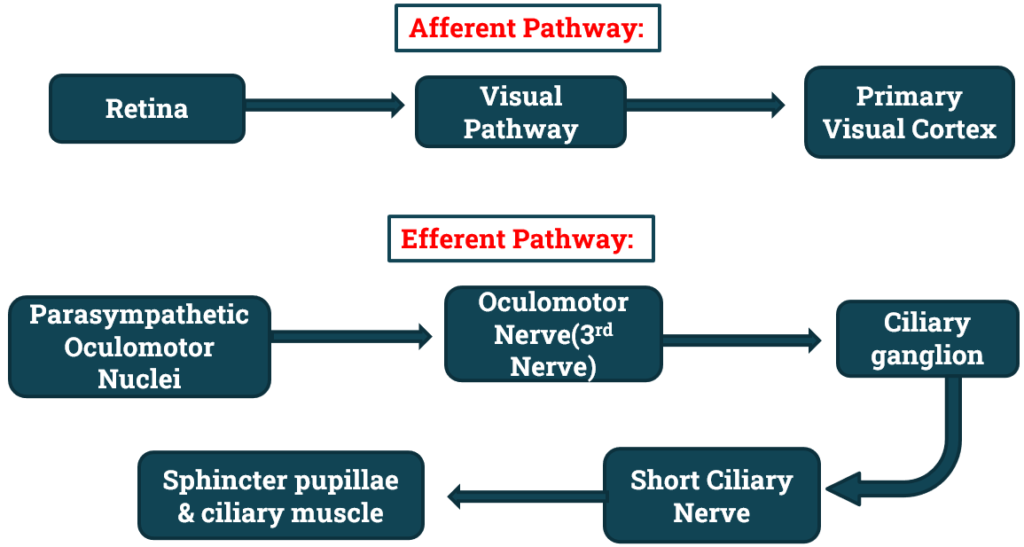
Anomalies of Accommodation of Eye
A. Diminished or deficient accommodation:
1. Insufficiency of accommodation
- Insufficiency of accommodation refers to a condition where the eyes have a diminished capacity to focus properly on nearby objects.
- This condition is characterized by an inability of the ciliary muscles and lens to increase their optical power to maintain a clear image on the retina when looking at closer objects.
2. Ill-sustained accommodation:
- “Ill-sustained accommodation” refers to a condition where the eye exhibits a normal initial accommodation response, but cannot maintain this accommodative effort over time.
- This can result in a progressive decline in the ability to keep a near object in clear focus during a prolonged visual task, such as reading or other close work.
3. Inertia of accommodation:
- Inertia of accommodation refers to a delay or slowness in the responsive action of the eye’s accommodation.
- It indicates a sluggishness in the eye’s ability to adjust its focus from far to near, or vice versa.
4. Paralysis of accommodation:
- Paralysis of accommodation is a condition where the eye cannot adjust its focus for different distances because the ciliary muscle cannot contract to change the shape of the lens.
- This results in a loss of accommodation, meaning the ability to see objects clearly at various distances is impaired. Paralysis of accommodation can be caused by various factors, including certain medications, trauma, neurological diseases, or it can be a temporary side effect of drugs that inhibit the parasympathetic nervous system.
B. Increased accommodation:
1. Excessive accommodation
- Excessive accommodation refers to a condition where the eye’s accommodation system is overly active, leading to a greater than necessary focusing effort for near vision.
- This can result in symptoms such as eye strain, headaches, blurred vision, and difficulties in shifting focus from near to distant objects.
2. Spasm of accommodation
- Spasm of accommodation is a condition characterized by an involuntary and persistent contraction of the ciliary muscle, leading to excessive focusing power of the lens.
- This condition can result in a continuous state of near focus, making it difficult to see distant objects clearly.
Other Courses: Ophthalmic Instrumentation, Clinical Refraction, Contact Lens, Binocular Vision, Dispensing Optics, MCQs in Optometry
Download our App “Optometry Notes & MCQs” from Google Play Store

